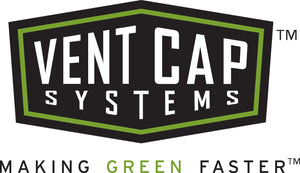Customer Service (512) 650-VENT
Currency
Free shipping over $500!
Advancing Energy Efficiency: The Significance of the International Energy Conservation Code
In a world where energy conservation is no longer an option but a necessity, the International Energy Conservation Code (IECC) emerges as a powerful tool in shaping the way we construct buildings. Responsible for establishing minimum efficiency standards for new constructions, the IECC plays a pivotal role in revolutionizing how we use energy in the built environment.
The Crux of Energy Efficiency
Buildings account for a staggering 40% of the energy consumption in our nation. This statistic alone underscores the urgency of enhancing the efficiency of buildings. The IECC serves as a beacon of progress in this realm. Its mission is to set the baseline for efficiency standards across various aspects of building design and construction, ranging from walls, floors, and ceilings to lighting, windows, doors, duct leakage, and air leakage.
What sets the IECC apart is its designation as a model energy code. Unlike national building energy codes that are state or local laws, the IECC acts as a guidepost for states looking to enhance their energy codes. Every three years, this code undergoes updates to incorporate new technologies and practices that align with evolving industry standards, ensuring that modern homes and commercial structures meet the latest efficiency criteria.
A Dynamic Evolution
The history of the IECC is a testament to its resilience and adaptability. Over the years, this code has evolved to accommodate progressive efficiency gains. However, it wasn't until 2009 and 2012 that a significant shift occurred, driven by the Energy-Efficient Codes Coalition (EECC). This coalition, comprising diverse stakeholders from government and business realms, brought forth a paradigm shift by advocating for over 30% energy efficiency enhancement.
The momentum continued, with the 2021 code cycle delivering yet another stride forward. The 2021 IECC boasts an impressive efficiency boost of over 10% compared to its 2018 counterpart. This achievement is a testament to the dedication of those who understand the importance of efficient buildings in mitigating energy consumption and reducing environmental impact.
Challenges on the Horizon
While progress has been commendable, challenges persist. The 2015 and 2018 code cycles experienced setbacks due to the influence of anti-efficiency lobbyists, impeding the advancement of energy conservation in construction. These lost opportunities not only set us back in our efforts to create more efficient buildings but also resulted in financial losses for homeowners and businesses due to buildings being constructed to weaker standards.
Looking Ahead
As the IECC moves forward, it is crucial to remember its significance as a linchpin in the journey toward energy efficiency. This code stands as a testament to collaboration, innovation, and the unwavering commitment of various stakeholders to create a sustainable future. By setting the bar higher with each iteration, the IECC is transforming buildings from energy guzzlers to efficient powerhouses.
So, whether you're an architect, builder, energy auditor, or HVAC technician, take note of the IECC's impact. It's not just a code; it's a catalyst for change, a beacon of efficiency, and a roadmap to a more sustainable built environment. As we construct the buildings of tomorrow, let the IECC be our guiding light toward a brighter, more energy-efficient future.
Click Here For ICC Code Adoption Maps
- Choosing a selection results in a full page refresh.





